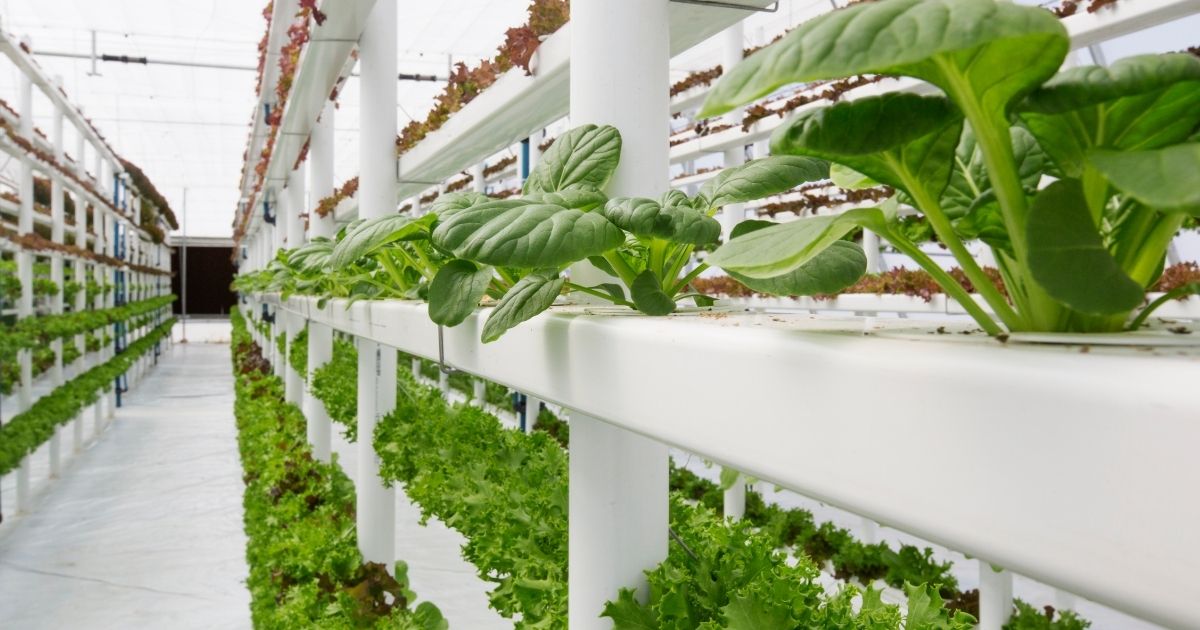- Who We Are
- What We Do
- Success Stories
- Careers
- News & Events
- Contact us

It is estimated that by the year 2050, the world’s population will grow to 9.7 billion. As you can imagine, feeding that many people would be a challenge. Because of the continuous urbanization, arable lands are lost every single day. Back in 2015, it was reported that the planet had lost about a third of its overall arable lands in the last 40 years.
Imagine how much more we could be losing. Then think about the increasing food demand with the ever-growing population. How are we going to solve this problem? The answer may be vertical farming.
What Is Vertical Farming?
Vertical farming is a type of agriculture that raises crops on a vertical plane instead of growing them on the ground. Vertical farming is a system that uses a variety of techniques to grow crops and livestock in vertically stacked layers. These stacked layers are usually placed indoors, usually in an urban area. The environment inside is carefully controlled to facilitate the growth of the crops.
How Vertical Farming Came To Be
The idea behind vertical farming came about because it is much more efficient in terms of space. Vertical farming can be done in an area where it would be impossible to grow crops normally. It is also a better alternative than traditional farming. This is because it uses 33% less water and 25% less fertilizer. It has a smaller environmental impact. It also has a higher productivity rate per acre.
The main difference between vertical farming and traditional farming is that instead of growing the plants in a flat, horizontal plane, vertical farming makes use of the third dimension or the vertical plane.
How Does It Work?
Vertical farming utilizes hydroponics, aquaponics, and aeroponics to grow their crops.
Hydroponics is the most common growing technique in vertical farming. It refers to the process of growing plants in water instead of soil. This allows more control over the growing environment. It is possible to regulate the amount of nutrient solution and the pH level of the water.
The roots are immersed directly into a nutrient solution in a typical hydroponics system. The nutrient solution is usually pumped through the system. Nutrients are constantly replenished as the solution passes through the system.
Aeroponics is the process of growing plants without the use of any medium. The roots of the plant grow directly into the air. The plant’s roots are sprayed with a nutrient solution which is usually delivered by an overhead mist. With this technique, more control is given to the cultivators. The number of nutrients and the water used is easier to regulate.
An aquaponics system is a combination of hydroponics and aquaculture. This system is often used in vertical farming. The basic idea behind aquaponics is that it combines the growing of fish and plants. Aquaponics is efficient because it allows the fish waste to serve as a type of fertilizer for the plants.
What Are The Benefits Of Vertical Farming?
Saves Water: Vertical farming is an effective way of growing crops because it saves water. This is because it is usually done indoors. It is also a good way of using water effectively. This is because more crops are grown in a smaller amount of space.
Less Fertilizer: Vertical farming is also a good way of using fertilizer. The crops use less fertilizer because there is no soil to absorb them. With the right nutrients, plants will be able to grow faster.
Higher Productivity: Vertical farming is also a great way of producing a higher output in terms of crop yield. This is because it grows plants in a more controlled environment. There are also fewer variables to contend with.
Improves Quality Of Crops: Vertical farming also makes it possible for growers to produce crops of better quality.
Conclusion
The goal of vertical farming is to improve the lives of those living in the cities where lands that used to be for agriculture are almost gone. With the increased quality of living that the innovation of vertical farming brings, the future cities will be more sustainable and better equipped to handle the coming population growth.
Note, though, that technologies developed for vertical farms are also being utilized by other segments of the indoor farming industry, like greenhouses, which can still make use of natural sunlight, albeit needing much more real estate.
Here at Informatics, we are passionate about the advancements of agricultural technology. Let us help you with our unique software solutions and our team of technology specialists. Contact us today to learn more about our services.
Written by Hiran Wickramasinghe
